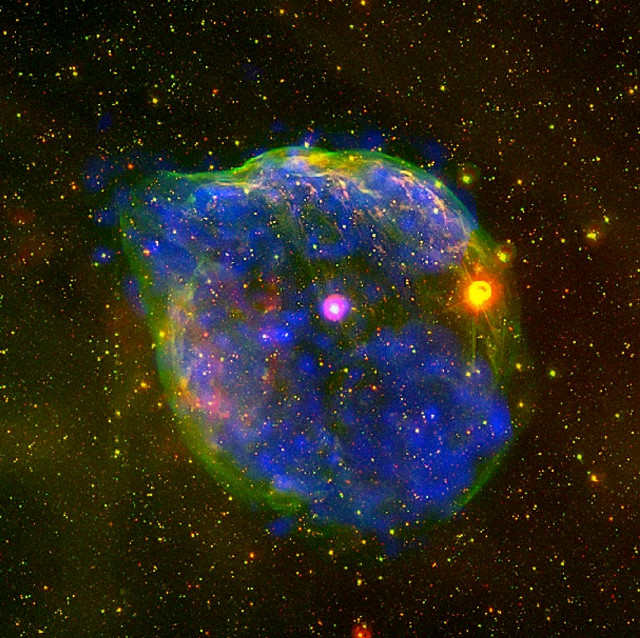
ESA’s XMM-Newton space telescope observed the star EZ Canis Majoris (EZ CMa), also known by the HD 50896 classification, which is about 5,000 light years from Earth. Represented with the pink color at the center of the image, it’s a really special star, because around it a gas bubble has formed which extends for about 60 light years.
EZ Canis Majoris is a Wolf-Rayet star, an extremely rare type of massive star – more than twenty times the Sun’s mass – and very hot that emits very strong solar winds. For this reason, these stars lose significant amounts of mass. Currently, astronomers think that Wolf-Rayet stars are a normal stage in the evolution of class O stars, which are the blue giants.
In recent years, a few hundreds Wolf-Rayet stars have been discovered thanks to space telescopes, allowing scientists to better study their characteristics. EZ Canis Majoris emits large quantities of gas at temperatures around a million degrees that emits X-rays detected by the European Photon Imaging Camera (EPIC) of the XMM-Newton space telescope and displayed in blue in the image.
The solar wind that cuts through the material surrounding it is shown in red and the green halo indicates the shock wave caused by the collision with layers of stellar material previously ejected into space. These elements were obtained from images taken by the Michigan Curtis Schmidt Telescope at Cerro Tololo Inter-American Observatory.
This show is destined to be short-lived, of course in astronomical terms, meaning that it iwll go on for a few million years. In fact, those massive stars have a short life because they consume their hydrogen at a very rapid pace. The huge bubble at some point will dissolve and later EZ Canis Majoris will reach the end of its life and explode in a supernova.
The characteristics of the bubble with EZ Canis Majoris in the center, another star who looks like a second eye, a “puff” of X-ray emission that look like an ear almost form a face, as if EZ Canis Majoris was wearing some sort of Halloween costume. It’s obviously an optical illusion but as long as it lasts it will be really an extraordinary show.


Permalink